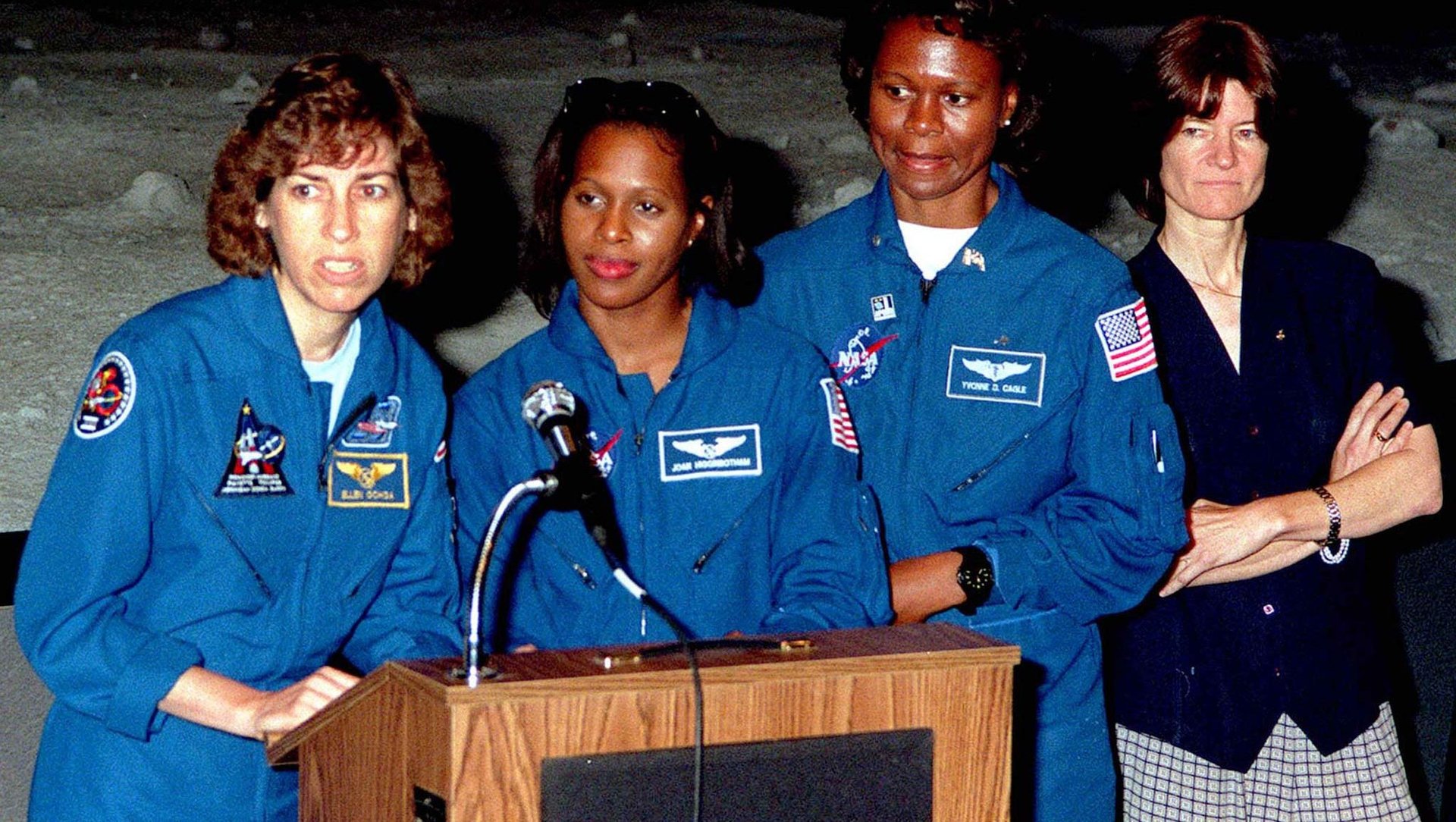NASA engineers thought female astronauts needed a full face of makeup
It is 2018 and Elon Musk wants to fly you to space as a guinea pig. What would you bring in your makeup bag?


It is 2018 and Elon Musk wants to fly you to space as a guinea pig. What would you bring in your makeup bag?
That’s the question that NASA engineers grappled with when women joined the shuttle astronaut corps in 1978, as noted by a Tweet published today by the NASA History Office.. “The engineers at NASA, in their infinite wisdom, decided that women astronauts would want makeup – so they designed a makeup kit…” Sally Ride, a physicist who became the first American woman in space in 1983, said. “You can just imagine the discussions amongst the predominantly male engineers about what should go in a makeup kit.” The prototype kit, which was never used in space, includes compartments for eyeliner, mascara, eye shadow, eye make-up remover, blush, and lip gloss.
As noted by the Smithsonian, personal hygiene kits have been standard spaceflight equipment since the 1960s, when only men were allowed to be astronauts. The standard kit included soap. lotion, deodorant, comb, razor, toothpaste, toothbrush, and more. Astronauts can customize the kit with their favorite brand of toothpaste. Instead of traditional shampoo, astronauts use a rinseless shampoo originally developed for hospital patients who cannot take showers.
There’s nothing wrong with wearing makeup in space, of course. Astronauts bring board games, mementos from home, books, and toys into space to keep themselves occupied and their morales boosted—so why not a flush of color on the cheeks or your favorite lip color? What’s strange is that the NASA engineers thought their women in space would want a full face of makeup in the first place. But they clearly did—there were four specialized compartments just for eye makeup, and not one compartment for moisturizer and other skincare products. I’ve never been to space, but modern-day dermatologists generally recommend avoiding heavy makeup while flying, due to stress, changing air pressure, and lack of moisture.
“Weightlessness is a great equalizer,” Ride told PBS documentary series Nova in 1984, referring to the lack of gravity in space. In an interview with Gloria Steinem shortly after her famed 1983 mission, she recounted that the media constantly asked her about the makeup products that she brought into space. ”They didn’t care about how well prepared I was to operate the [Space Shuttle] arm or deploy communication satellites,” she said. The engineers were also preoccupied with how many tampons she’d need for a week in space. “Is 100 the right number?” they asked. “No. That would not be the right number,” she replied.
Unfortunately, that is still a prevalent attitude that female astronauts have to deal with today. In 2015, six Russian female cosmonauts were asked how they would cope without makeup in a eight-day spacecraft simulator. Like their American counterparts, they bristled at the question. “I don’t know how we’ll survive without shampoo,” one cosmonaut, Anna Kussmaul, replied sarcastically. “Because even in this situation, we really want to stay looking pretty.” As of 2012, about 6,000 of NASA’s 18,000 employees are women. They all have better things to worry about than their eye makeup.